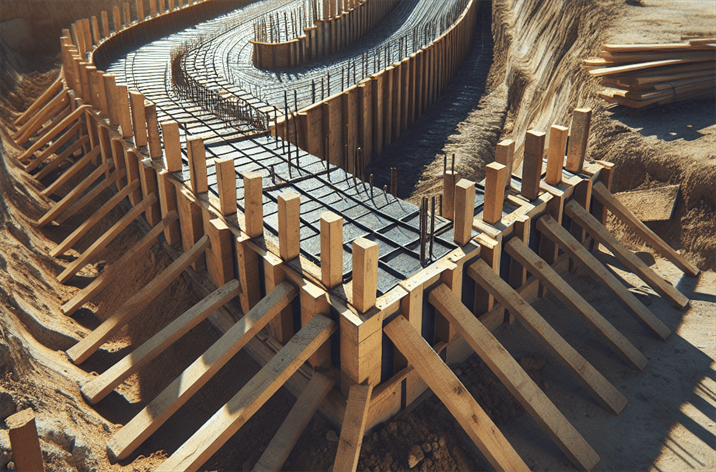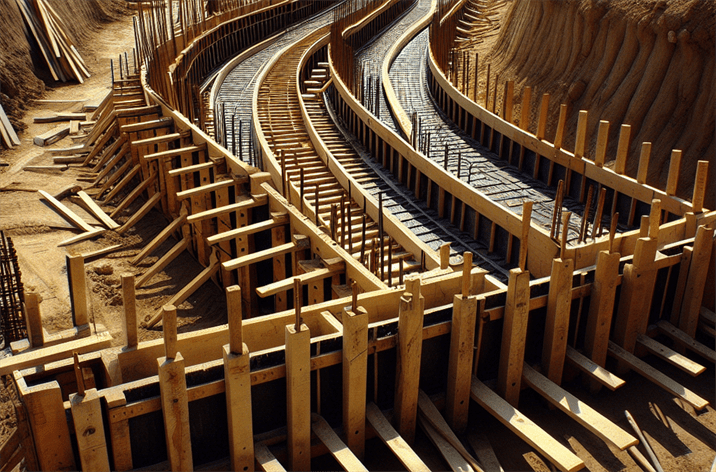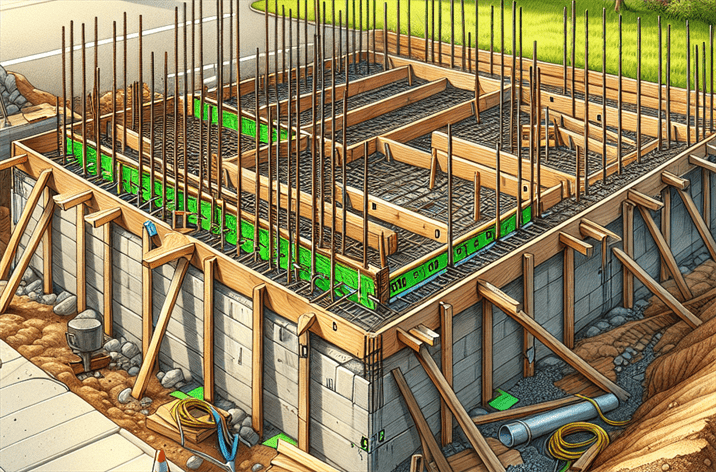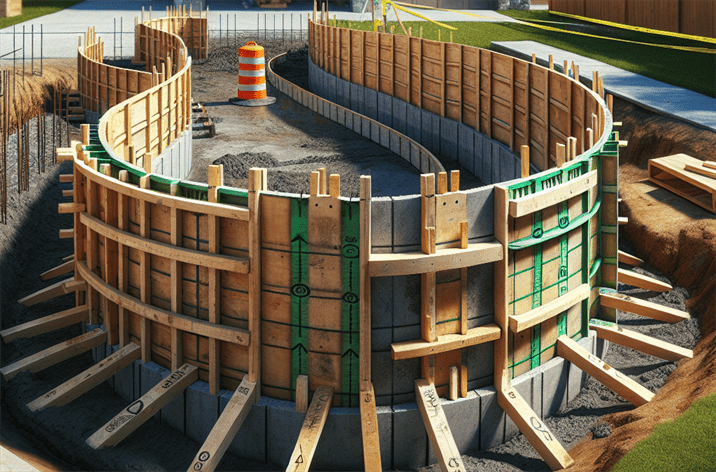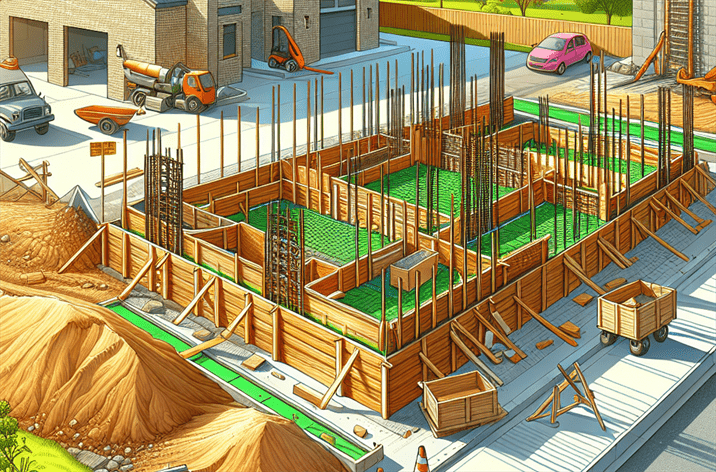Construction Boundary Markers: How to Ensure Proper Placement
Introduction
Have you ever thought about the unassuming but vital role that Construction Boundary Markers play in the construction landscape? These markers are much more than mere indicators; they are essential tools for defining project limits. Proper placement of these markers can significantly save time, resources, and money—an undeniable benefit in the fast-paced construction industry.
In the world of construction, boundary markers serve as a fundamental aspect of project management and compliance with regulatory requirements. They delineate property lines, ensuring that construction activities remain within the legal boundaries. As urban areas expand and land use becomes more complex, the importance of these markers has grown exponentially. They help in avoiding disputes and legal complications, making them indispensable tools for builders, contractors, and architects alike.
This article will delve into the intricacies of construction boundary markers. We will explore their definition, underlying mechanisms, benefits, common challenges, and best practices for effective use. By understanding these facets, you can ensure that your construction projects are not just compliant but also efficient.
What are Construction Boundary Markers?
Definition
Construction boundary markers are tools used to define the limits of a construction site or property. These markers can take various forms, including wooden stakes, flags, or even sophisticated electronic devices. The primary purpose of these markers is to provide a clear visual representation of where construction activities can take place, thereby helping to avoid encroachments onto neighboring properties.
Historical Context
Traditional Methods vs. Modern Approaches
Historically, boundary markers have been used for centuries to delineate property lines. In ancient times, stones or wooden posts were placed at corners to mark boundaries. However, the introduction of technology has transformed how we approach boundary marking today. Modern methods utilize GPS technology, laser tools, and more precise surveying equipment, allowing for greater accuracy and efficiency.
The Importance of Construction Boundary Markers
Construction Boundary Markers in the Context of Urban Development
As cities grow and urban development accelerates, the need for precise construction boundary markers becomes increasingly critical. They play a vital role in city planning and zoning laws, ensuring that developments meet legal and environmental standards. Without accurate markers, developers risk running into legal issues that can delay or even halt projects.
Key Players or Contributors
Several organizations and innovations are pivotal in advancing the effectiveness of construction boundary markers. Surveying firms, construction companies, and technological innovators have collaborated to enhance the tools and methods used for marking boundaries. For further reading, consider our guide on Effective Construction Staking Techniques
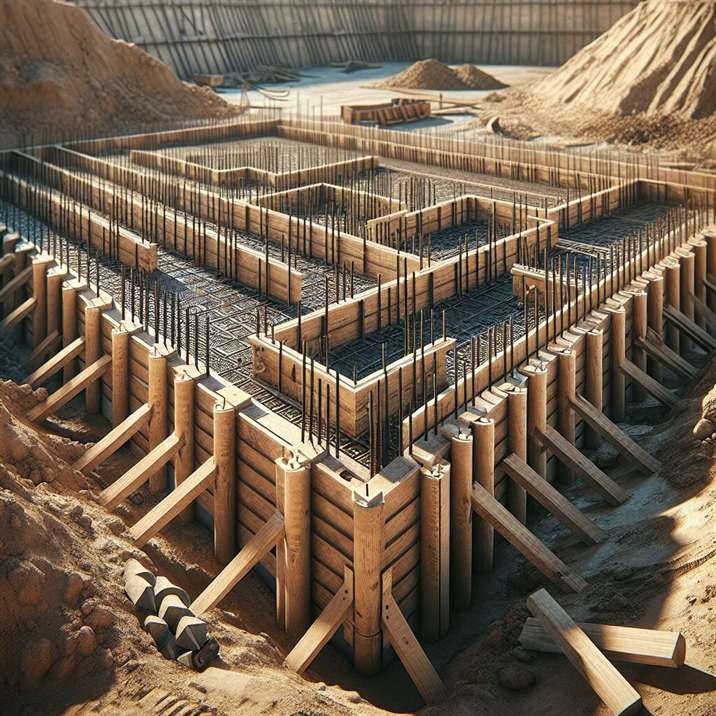
How Do Construction Boundary Markers Work?
The Mechanics of Construction Boundary Markers
The effective use of construction boundary markers involves a series of practical steps. First, the project area is surveyed, and the boundaries are established based on legal property lines. Next, markers are placed at strategic points to delineate these boundaries clearly. This process often includes the use of string lines or surveying equipment to ensure that the markers are aligned accurately.
Technological Foundations of Construction Boundary Markers
The rise of technology has significantly impacted how construction boundary markers are used. Equipment like GPS and sophisticated mapping software aids in the precise placement of markers. With these tools, construction teams can easily visualize the project boundaries on digital platforms, ensuring accuracy and compliance with regulations.
Real-World Applications of Construction Boundary Markers
Case Studies/Examples of Construction Boundary Markers in Action
Numerous projects have successfully implemented construction boundary markers to enhance efficiency and compliance. For instance, in a recent urban development project, the use of GPS technology for boundary marking allowed for a seamless construction process, minimizing the risk of encroachment on adjacent properties.
Benefits and Drawbacks of Construction Boundary Markers
Benefits:
- Clarity: Provides clear visual cues for workers.
- Legal Compliance: Helps avoid disputes over property lines.
- Efficiency: Streamlines the construction process by reducing errors.
Drawbacks:
- Cost: High-tech solutions can be expensive.
- Maintenance: Markers can be damaged or moved, requiring regular checks.
Best Construction Boundary Markers
When it comes to selecting the best construction boundary markers, various factors come into play. Here are some options to consider:
Wooden Stakes
Wooden stakes are traditional yet effective markers. They are relatively inexpensive and easy to install. However, their durability can be a concern, especially in adverse weather conditions.
Survey Flags
Survey flags are often used in conjunction with wooden stakes. They provide high visibility and can be easily seen from a distance, making them an excellent choice for larger projects.
Plastic Markers
Plastic markers are durable and resistant to weather elements. They are lightweight and often used in temporary applications, making them a versatile option.
Metal Stakes
For projects requiring higher durability, metal stakes can be an ideal choice. They are robust and can withstand harsh conditions, but they tend to be more costly.
For more information on choosing the right markers for your project, check out our article on choosing the best surveyors wooden stakes for your project.
Common Challenges with Construction Boundary Markers
Despite their benefits, there are challenges associated with construction boundary markers. Here are some common issues:
Misplacement
Markers can be easily misaligned or moved, leading to potential disputes or project delays. Regular checks and adjustments are necessary to maintain accuracy.
Weather Impact
Adverse weather conditions can affect the visibility and stability of certain types of markers, particularly wooden stakes.
Compliance Issues
Failing to adhere to local regulations regarding boundary marking can result in fines or project delays. It’s essential to stay informed about local laws and regulations.
Best Practices for Using Construction Boundary Markers
Regular Monitoring
Regular monitoring of boundary markers is crucial. This includes checking their alignment and ensuring that they remain intact throughout the project duration.
Training for Workers
Providing training for workers on the importance and use of construction boundary markers can reduce errors and improve compliance.
Use of Technology
Leveraging technology, such as GPS and mapping software, can enhance the accuracy and efficiency of boundary marking.
Documentation
Keeping thorough documentation of the boundary marking process can be beneficial in case of disputes or regulatory inquiries. This records the exact placement and any adjustments made throughout the project.
For a detailed guide on setting up boundary markers, refer to our article on construction boundary markers.
Future Trends in Construction Boundary Markers
As the construction industry evolves, so do the tools and techniques used for boundary marking. Here are some trends to watch:
Integration with Smart Technology
The integration of smart technology into construction processes is on the rise. Future boundary markers may incorporate IoT devices to provide real-time data on their status and location.
Sustainability
With an increasing focus on sustainability, eco-friendly materials for boundary markers are becoming popular. These markers not only serve their purpose but also align with environmental goals.
Enhanced User Experience
As technology advances, user-friendly interfaces will make it easier for construction teams to manage and monitor their boundary markers, improving overall project efficiency.
Conclusion
In conclusion, construction boundary markers are integral to the successful execution of construction projects. They provide clarity, enhance legal compliance, and streamline processes. Despite some challenges, adhering to best practices can help overcome potential issues, ensuring that projects stay on track.
By staying informed about the latest trends and technologies, construction professionals can make informed decisions regarding their boundary markers. Whether you’re a contractor, architect, or builder, understanding the nuances of boundary marking can lead to more efficient and compliant projects.
For more insights into construction methodologies, consider exploring our guide on construction project markers.
With the right tools and practices in place, you can navigate the complexities of construction boundary marking with confidence!


